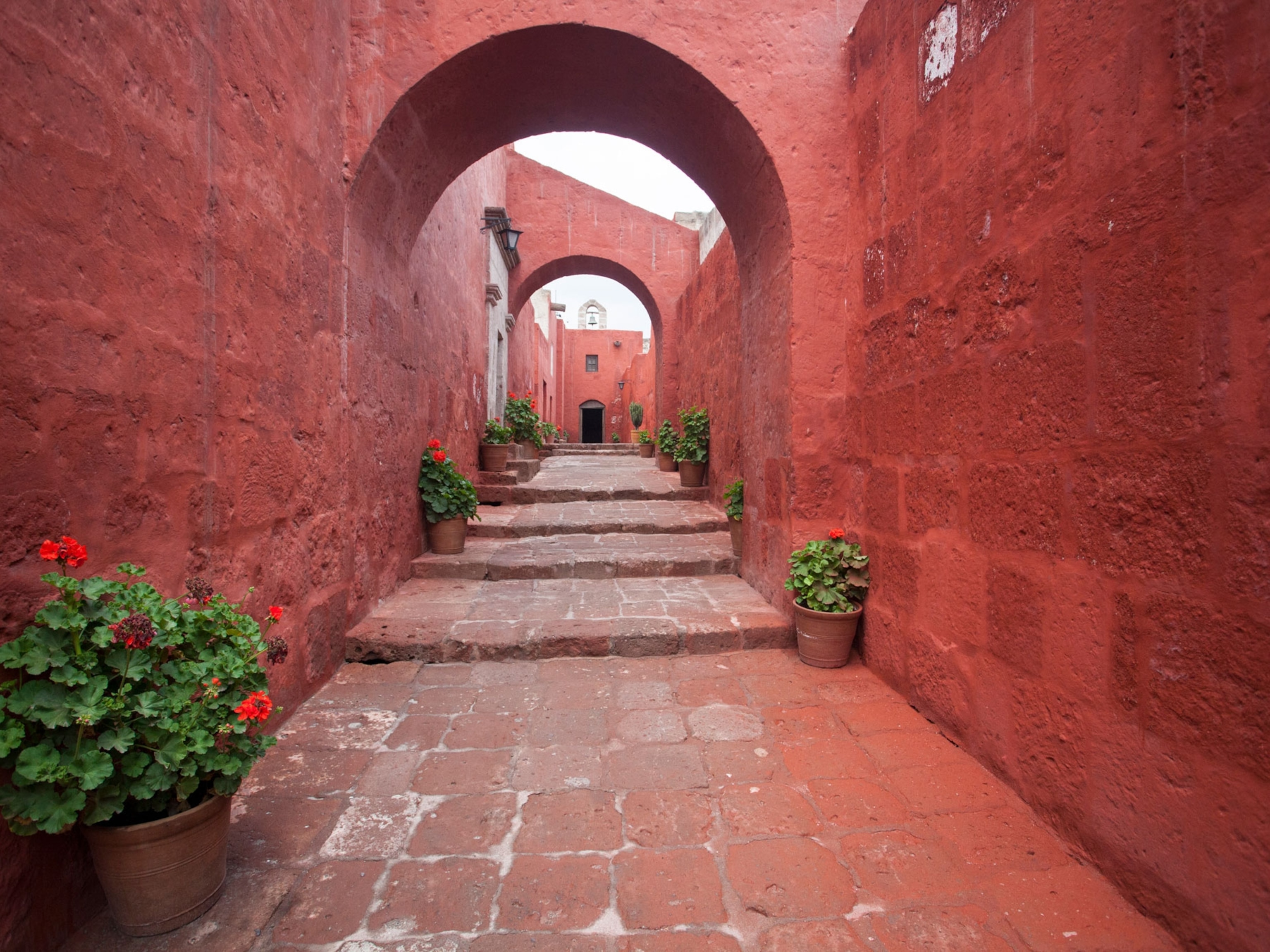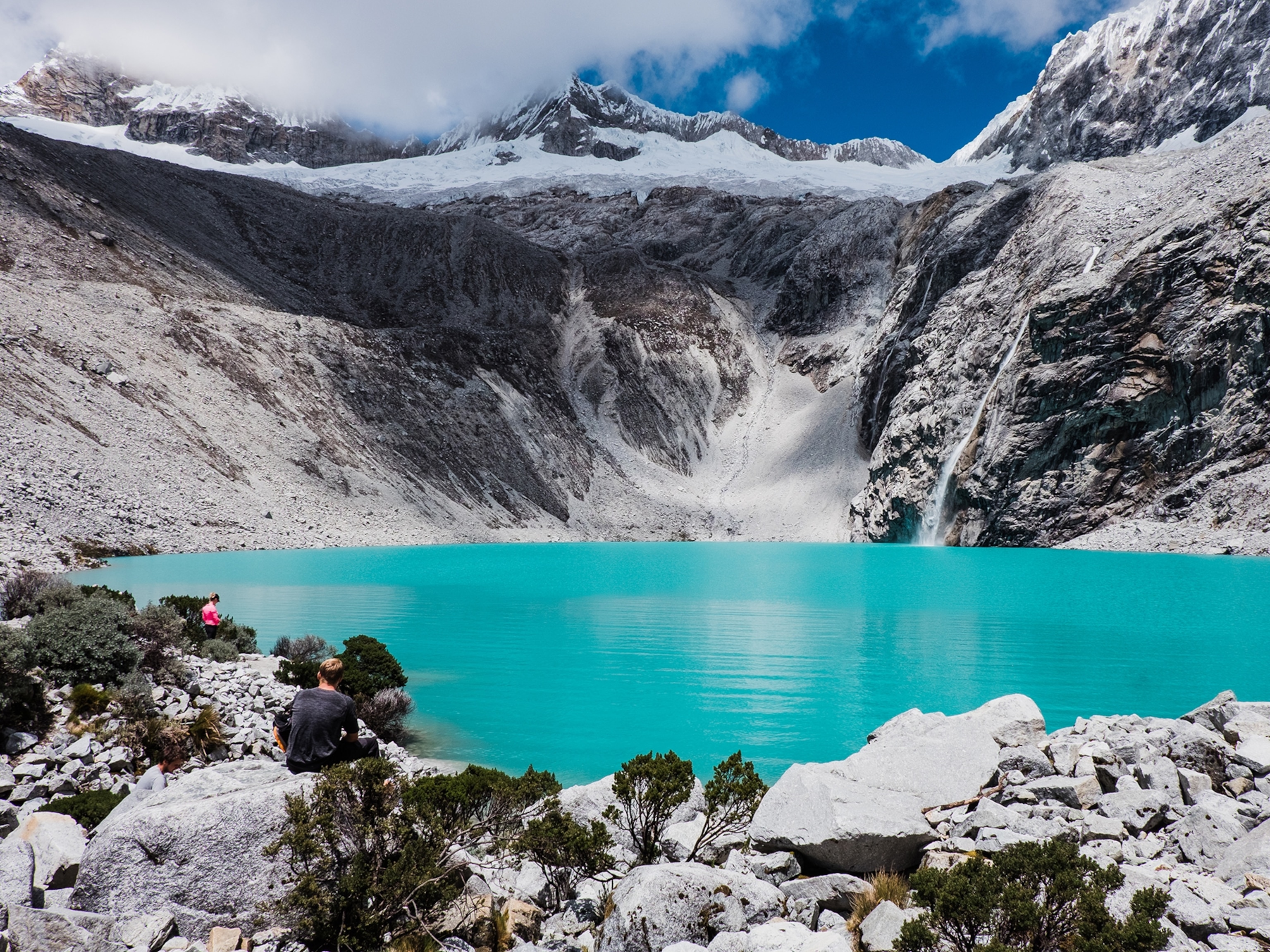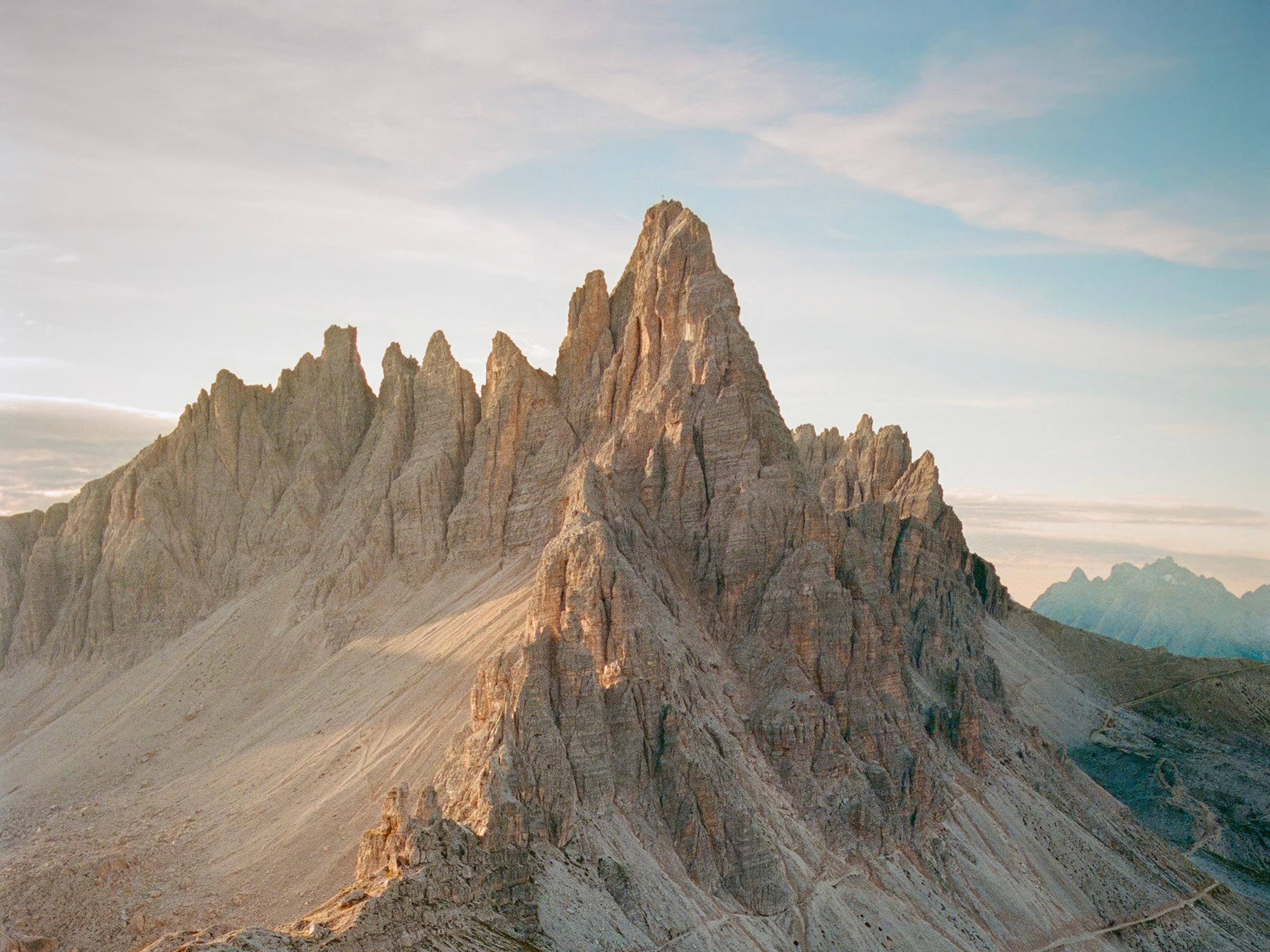Soar Above Peru's Mysterious Desert Drawings
These massive, ancient designs are one of archeology’s greatest mysteries.
From above the rust-colored desert plains of Peru, a mysterious tapestry of geometric shapes and animal figures appears on the ground, etched in white.
The geoglyphs scratched into the barren ground of the Rio Grande de Nasca drainage basin are the Nasca Lines, one of archeology’s greatest mysteries. Theories of their purpose put forth over the years have included alien-constructed landing strips, a giant astronomical calendar, ceremonial pathways to the sites of sacred rituals, and markers of subterranean water sources.
The fantastic landscape—with representations of hummingbirds, spiders, monkeys, trees, trapezoids, and spirals—was created by removing rocks and the top layer of soil, colored red by oxidation, to reveal the lighter earth underneath. Thanks to the unusually dry and windless climate, the images have been incredibly well-preserved. (Related: Trucker Drives Over Mysterious Ancient Monuments)
Over the centuries, the lime-rich sub-layer of soil hardened, further protecting the designs from wind damage and preserving them for future generations. Today, the landscape represents the largest and most diverse collection of geoglyphs in the world. The site was inscribed UNESCO World Heritage in 1994 for its archeological and cultural significance.
Altogether, the designs cover more than 300 square miles and include dozens of animal and plant figures and hundreds of lines and shapes. Many of the images are so large that they can only be fully seen from above, leading some to believe that they were meant for the eyes of gods, not humans.
The geoglyphs are believed to have been created in several phases between 500 B.C. and 500 A.D. by the pre-Hispanic people living on the Peruvian south coast. The Nasca people, who predated the Incas by centuries, inhabited the area until about 700 A.D.
The images were rediscovered in the modern era after the advent of aviation, as pilots began flying over Peru in the 1930s. Since that time, a series of researchers have obsessed over the reason behind the designs, some devoting their lives to the research.
One of the earliest to intensively study the geoglyphs was American professor Paul Kosok, who theorized that the designs represented “the largest astronomy book in the world.” The view was shared by German researcher Maria Reiche, who devoted her career to the project, earning her the moniker “Lady of the Lines.”
Later researchers disputed the astronomical explanation and suggested a number of other theories. Johan Reinhard, a National Geographic Explorer-in-Residence, posited that the lines pointed the way to ritual sites, while researchers David Johnson and Don Proulx concluded that the designs were markers of an underground water system. (Related: 7 Ancient Sites Some People Think Were Built by Aliens)
- National Geographic Expeditions
New images continue to be discovered, most recently in Palpa province, where 50 new examples were uncovered in early 2018. Many of the images, which include a dancing woman and a whale, are believed to have been created by the Paracas and Topara cultures, who inhabited the land before the Nasca people.
How to visit:
There are two options for viewing the Nasca Lines: from the air or via a viewing platform adjacent to the site. Private planes are available for charter from the Nasca airport for those who want the full gods-eye view. The plane tours cost about a hundred dollars for a half-hour tour, but will certainly provide the most memorable viewing. It is recommended for those who opt for the aerial tour that they book in advance and research the safety record of the company with which they will be chartering.
For those on a budget, there is no need to skip the site. Several the geoglyphs can be seen from El Mirador, a platform situated on a hill off the Pan American Highway.

















































